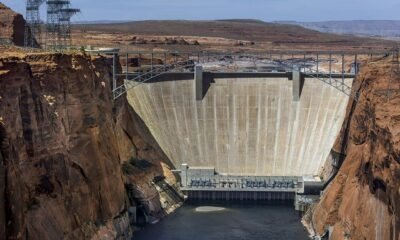General News
Olympic Triathletes Brave Seine River Waters for High-Stakes Mixed Relay Amid Quality Controversies

PARIS, France — Olympic triathletes braved the Seine River on Monday morning as the mixed relay event kicked off. Organizers asserted that bacterial levels in the historically polluted waterway met acceptable standards.
Hosting the swimming sections of the triathlon and marathon swimming events in the Seine was a bold plan. The river has largely been off-limits for swimming since 1923 due to its notorious toxicity.
An emergency meeting was held Sunday night involving representatives from World Triathlon, the International Olympic Committee, Paris Games organizers, and regional authorities. Water quality tests showed improvement, allowing the triathlon site to meet the necessary regulations by Monday morning.
Germany won gold in a tight race, followed by the United States with silver, and Britain taking bronze.
However, Belgium’s Olympic committee decided to withdraw after one of its athletes fell ill following a swim in the Seine. It remains unclear if the illness was linked to river water.
Paris has invested 1.4 billion euros ($1.5 billion) to clean the river, building infrastructure like a giant basin to manage rainwater overflow, renovating sewer systems, and improving wastewater treatment plants.
Heavy rain intermittently disrupted the Games, increasing fecal bacteria levels. Despite Thursday night’s heavy rain, conditions mostly remained dry until light rain on Saturday. Organizers reassured athletes that the sun’s ultraviolet rays combined with warm temperatures would neutralize harmful bacteria.
Athletes had previously swum in the river for other events during the week, though a men’s race was delayed due to water quality concerns. Bacterial levels also led to canceling some training swims.
Brazilian triathlete Arnold Djenyfer stated after the race, “There was really no difference about the quality of the water today compared to the first race. We already knew what we were going to face, and it was all fine.”
Several athletes, including Norway’s Vetle Bergsvik Thorn, reported falling ill after previous swims in the Seine. Thorn experienced a severe stomach illness, but attributed it to potential food poisoning rather than the river water.
Swiss triathlete Adrien Briffod, who competed in earlier events, withdrew due to a stomach infection. His replacement, Simon Westermann, also dropped out because of a gastrointestinal issue, though he had not swum in the river.
Julie Derron of Switzerland, who won silver in the women’s individual triathlon, said, “I think it was challenging conditions, obviously, to hold the race, but the pictures, the memories that we take away, they’re incredible.”
Daily water quality tests assess fecal bacteria levels, including E. coli. World Triathlon and the EU assign standards for acceptable levels to proceed with competitions.
Under World Triathlon rules, E. coli levels up to 1,000 colony-forming units per 100 milliliters can be deemed “good” for competitions.
The mixed relay triathlon includes four-person teams of two men and two women. Each athlete swims 300 meters, cycles 6.8 kilometers, and runs 2 kilometers.


















